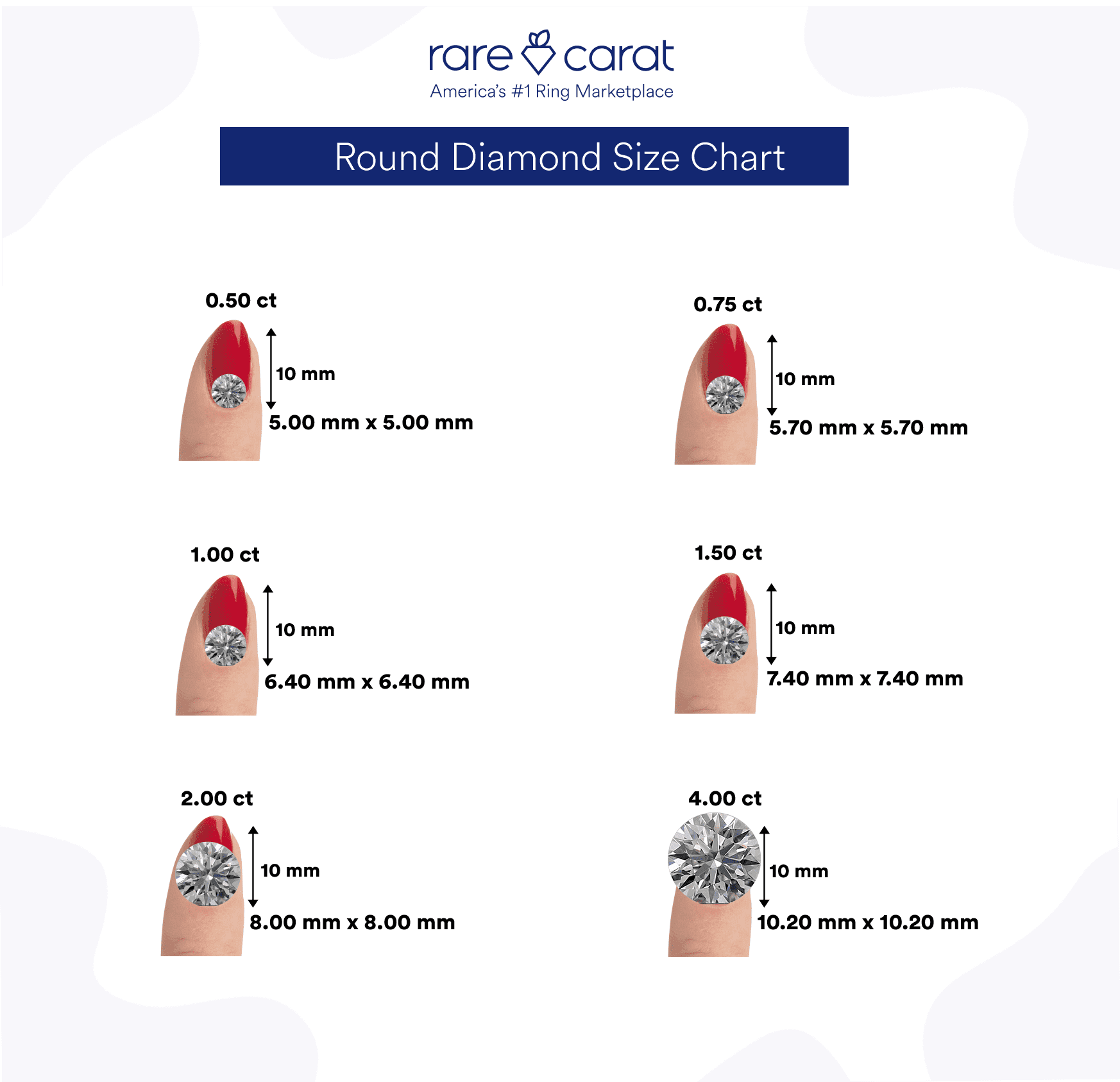- Choosing the ideal diamond size for you or your partner will depend on personal style, finger size, and budget.
- The average engagement ring diamond size in the U.S. is around 1 carat.
- Finger shape and size can affect how big or small a diamond appears.
- All else being equal, as diamond size increases so does cost.
- For any budget, consider the balance between size and other factors like cut, clarity, and color.
So, you’re ready to pop the question - Congratulations!
Before you do, there are a few things to consider. Starting with, “how do I know what diamond size is the ‘right’ size?” You’ve asked friends, jewelers and Google, only to hear the not-so-helpful, “it depends”. To be honest, it truly does depend, and no carat weight or diamond size is right for all situations or all couples. A number of factors including budget, style preferences and even what daily life looks like are key to finding the right diamond.
In order to help, we've put together the following four questions to walk you through the process of choosing the right diamond size for your special moment. Here's what we recommend asking yourself to help guide your diamond size choice for your engagement ring.
1. How much are you comfortable spending?
First, you should determine what diamond budget you're comfortable with while also considering the cost of the setting itself. When thinking through budget there are always options to pay outright as well as to finance the purchase.
We’ve heard the old, “spend three months salary” adage but that’s not a modern standard by any means especially with the increasing popularity of lab grown diamonds. So, don’t let that "rule" inform how you feel about your budget. There are diamonds and settings out there to fit every budget. If you’re looking for a reference point, according to The Knot, the average wedding ring cost around $5,200 in 2024.
2. Does your significant other have a certain style in mind?
At this point, you may have seen many different styles and cuts of diamonds as well as ring settings. You've probably also seen rings in stores and on your friends that you may particularly like. It's also just as important to note styles that you don't care for. Do any of the designs you like have a theme? You may be more attributed to simple bands with a larger stone like a bold solitaire diamond, more intricate bands, clusters of small diamonds, or other types of designs. Our certified diamond experts can always help you narrow down your search and find the styles you like most.
Your partner may not know the exact diamond size they would prefer, but you can get a great idea of their expectations by keeping in mind any comments they may have made about rings you've seen. Remember that carat weight is not the only measure of a diamond and isn't the sole factor of how large a gem looks.
3. How important is diamond quality vs. size?
Within a given budget there is always a give-and-take between quality and carat size. It's important to understand how cut, color, and clarity impact how a gem looks and which factors are most important to you. Each of these variables alongside how big the diamond is will influence its price.
If you need to make a little room in your budget to get a bigger diamond, use the 4 Cs to your advantage. Consider choosing a diamond that comes in just under a standard carat weight or opt for a gem in the G-J color range. You can save on the color and get a larger stone still within your budget.
4. What will the daily life of this diamond look like?
Thinking through what your significant other's day looks like can help you determine the size and style of diamond that will work best! Ideally, this ring will be worn every day with little need to take it off. If your partner works with their hands you may want to think twice before getting a diamond whose profile is tall. Consider a style and size that’s more flush with the hand, and so will be less likely to get caught or knocked on something and won’t be an issue when wearing gloves.



Diamond Size FAQs